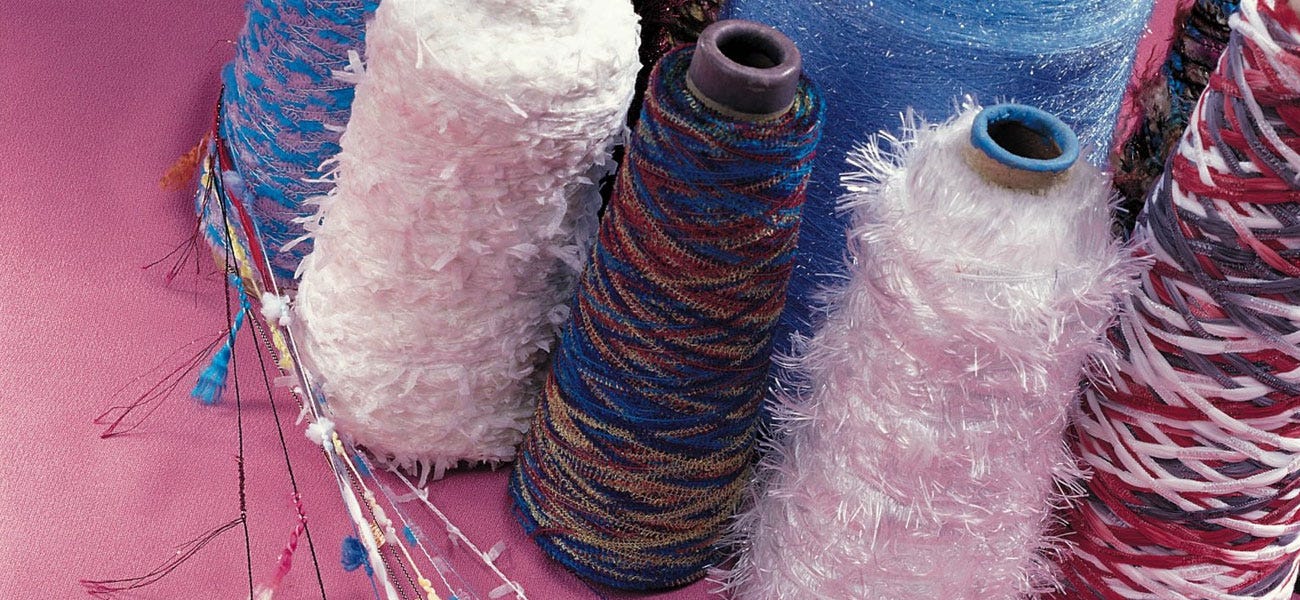Fancy yarns weaving value in fashion, function and global trade.
The fancy yarn market is poised for significant growth, with a projected CAGR of 5.7 per cent until 2031, reaching $9.8 billion. This trend reflects the increasing demand for unique textures, colors, and functionalities in various textile applications. “Fancy yarns are the magic ingredient that transforms ordinary fabrics into extraordinary creations," opines, Maria Luisa Mastroianni, CEO, Filpucci Spa. A look at the value proposition of fancy yarns across different perspectives…
Fashion & functionality
Aesthetic appeal: Fancy yarns add visual interest and dimension to fabrics, enabling designers to create eye-catching garments and home textiles. Fancy yarns transcend mere aesthetics. Textures like chenille and bouclé provide warmth and comfort, while metallic threads add a touch of glamour. Their diverse textures, from the plush bouclé to the shimmering metallic, add depth and dimension to fabrics, enabling designers to create statement pieces. For example, Gucci's Fall/Winter 2023 collection features boucle sweaters and metallic-threaded jackets, exemplifying how fancy yarns elevate fashion beyond the ordinary.
Functionality enhancement: Certain fancy yarns offer functional benefits beyond aesthetics. For example, boucle yarns can trap air, providing insulation, while slub yarns their uneven texture, offer breathability and drape, perfect for summer clothing. Chenille yarns, provide superior warmth and insulation, making them ideal for winter wear.
Versatility: Fancy yarns have diverse applications, from high-end fashion apparel to cozy home décor accessories and even craft projects. This versatility broadens their market reach and appeal. “Sustainable and eco-friendly fancy yarns are the future, catering to the growing demand for conscious fashion," points out Ruchira Desai, Head of Design, Siyaram's Silk Mills.
Cost & pricing: Beauty with a premium tag
The intricate nature and often complex production process of fancy yarns lead to higher production costs compared to conventional yarns. This translates to premium pricing for finished products, making them desirable for luxury and high-end brands reveals Allied Market Research, 2023 study. However, the increased value proposition justifies the cost for discerning consumers seeking exclusive and distinctive products.

While some fancy yarns involve intricate structures and expensive materials, others utilize innovative techniques to achieve unique effects at competitive prices. This opens the market to a wider consumer base. "Digitalization opens exciting possibilities for customized fancy yarns, catering to niche markets and individual preferences," says Wolfgang Fritz, Managing Director, Textilaner AG. As per McKinsey & Company, consumers seeking distinctive and personalized items are willing to pay a premium for fancy yarns, perceiving them as adding value to the finished product.
Global perspective
China, Italy, India, and Turkey are prominent players in the fancy yarn manufacturing landscape, each with distinct strengths and specialties. For example, China excels in mass production, while Italy is known for high-end luxury yarns. Italy’s Filpucci Spa., Filati G.B. Srl, China’s Jiangyin Huayi Yarn, and India’s Siyaram's Silk Mills are some prominent players.
Global fancy yarn exports are expected to reach $4.2 billion by 2028, driven by rising demand and production capacities. Developed economies like the US and Europe remain significant consumers due to their established fashion industries and high disposable incomes. However, emerging markets like India and China are witnessing rapid growth as their fashion sectors mature, reveals Mordor Intelligence. The fancy yarn market is characterized by a dynamic global trade network. As per Statista, 2023 study, China, Turkey are major exporters, while countries like the US and Italy import significant quantities. Regional trade agreements and evolving sourcing strategies influence import-export patterns.
India scenario
India is a major producer, known for its expertise in traditional techniques like handloom weaving and chikan embroidery. However, the industry faces challenges due to modernization and scaling production. The domestic market for fancy yarns is also growing, driven by rising disposable incomes and a growing fashion-conscious population. India exports fancy yarns to various countries, including the US and Europe, but the share remains modest compared to major players.
To sum up, fancy yarns offer a unique combination of aesthetic appeal, functionality, and value addition, driving their growth in the global textile industry. Understanding the diverse perspectives, from fashion trends to trade dynamics, provides valuable insights for stakeholders to thrive in this evolving market.
